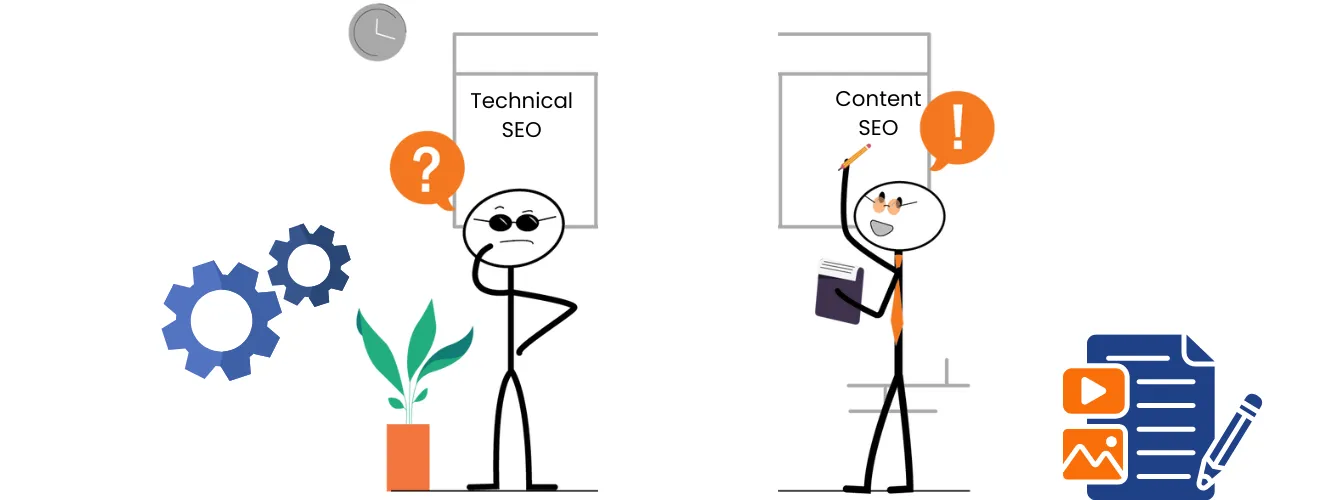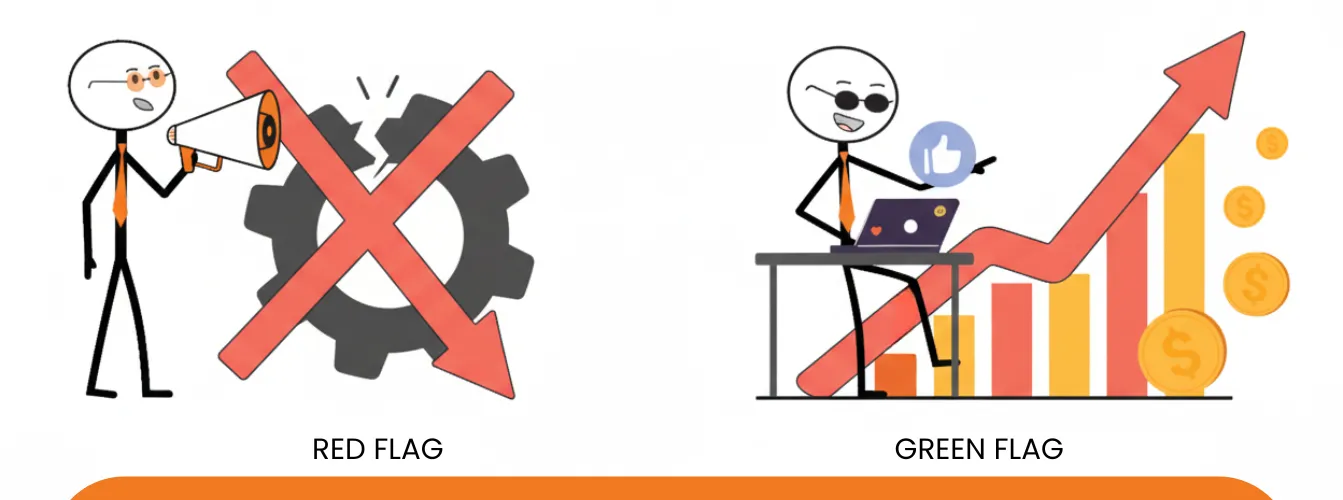Keeping up with the latest content marketing trends is a must if you want to stay ahead of the competition. Technology is constantly evolving, and consumer behaviors are shifting quicker than ever. What worked last year, or even last month, might not cut it anymore. Recent trends have significantly shaped content marketing, setting the stage for 2025 innovations.
Why the Shift?
Consumer behavior is evolving rapidly, changing the way people consume content. While traditional methods still have value, they need to be adapted to today’s audience. Here’s a closer look at some key aspects driving this shift:
- Personalization: Data and analytics allow us to tailor content to specific audience segments, fostering deeper engagement and loyalty.
- Visual Appeal: Attention spans are shorter, demanding visually engaging content like videos, infographics, and interactive elements on platforms like TikTok, Instagram, and YouTube.
- SEO Optimization: Organic traffic remains a powerful source of leads, and optimizing content with strategic keywords and backlinks is still crucial for search engine visibility.
- Building Trust: Authenticity is key to building lasting relationships with your audience. User-generated content (UGC) builds trust and amplifies reach, fostering a stronger sense of community.
In this blog post, we’ll dive into the 8 marketing trends you can’t ignore in 2025. These insights will help businesses refine their strategies, leverage new tools, and stay one step ahead of competitors.
1. AI-Driven Content Creation
Artificial intelligence (AI) is revolutionizing content marketing by allowing you to create high-quality content at scale. These AI-powered tools use natural language processing (NLP) to understand context and generate engaging content. A recent study by HubSpot found that 60% of marketers already leverage AI for content creation, which is expected to rise significantly in 2025.
The launch of powerful language models like ChatGPT in 2022 accelerated the use of AI in content marketing. Now, a wave of AI-driven tools is reshaping how marketers approach content strategy.
However, it’s important to remember that AI shouldn’t replace human creativity. Great content still thrives on the human touch. Use AI for brainstorming ideas and developing article outlines to empower your writers. When used strategically, AI can start a blog 60% to 75% and allow skilled writers to work faster, according to a report by Content Marketing Institute. This frees them up to focus on the strategic aspects of content creation, ensuring your content remains insightful and engaging.
2. The Importance of Voice Search Optimization
Voice search is rapidly transforming how users access information. Fueled by the ubiquity of smart speakers like Amazon Echo (over 500 million units sold globally) and Google Home (over 50 million units sold), along with the constant companions – mobile voice assistants (Siri and Google Assistant boasting billions of users), voice search has become a mainstream phenomenon.
200 million users in the US alone utilize voice search: This staggering statistic, from Voicebot.ai, highlights the sheer volume of users relying on voice for information. As more consumers use voice search to find information, products, and services, businesses need to adapt their content to meet this growing demand. According to a report by eMarketer, 33.2% of the US population uses voice assistants monthly, highlighting the importance of optimizing for voice search. Understanding this shift is crucial for businesses striving to stay relevant. Here’s where voice search optimization (VSO) comes into play.
3. Interactive Content to Boost Engagement
Interactive content, such as quizzes, polls, and interactive infographics, encourages user participation and is a powerful tool for boost engagement 2x from the passive content. Unlike static content, interactive features require active involvement, making the experience more memorable and engaging for users.
Interactive content grabs attention and holds interest by keeping users involved and preventing them from passively scrolling past. It provides immediate value through personalized experiences, encouraging users to spend more time on your website and explore your offerings more deeply. According to a study by the Content Marketing Institute (CMI), 91% of consumers agree that interactive content enhances brand messaging retention. Additionally, 81% of marketers agree that interactive content is more effective at grabbing attention compared to static content.
4. Short-form video Content Dominance
Short-form video content will be the top-leveraged marketing content in 2025. Platforms like TikTok, Instagram Reels, and YouTube Shorts have captivated audiences with their quick, engaging video formats, which cater to the modern viewer’s shorter attention span and preference for mobile-friendly content.
According to Wyzowl, 91% of businesses will use videos as a marketing tool in 2023. Short-form videos are effective because they quickly capture attention, making them ideal for today’s fast-paced digital environment. They are easily consumable on mobile devices, which is crucial as mobile usage continues to rise. Additionally, their concise nature makes it easier for users to share and interact with the content, amplifying its reach.
5. Personalization and Hyper-Targeted Content
The trend toward personalized content involves creating unique experiences tailored to individual user preferences, behaviors, and needs. As consumers increasingly expect relevant and customized interactions, businesses use personalization to stand out and build stronger connections with their audiences.
Businesses gain insights into consumer behavior, preferences, and demographics. This information is essential for crafting targeted content that resonates with specific audience segments. According to a McKinsey report, 78% of consumers said personalized content made them more likely to repurchase from a brand. You can create more precise targeting by dividing your audience into distinct groups based on age, location, purchase history, and interests.
6. Ephemeral Content for FOMO Marketing
Ephemeral content refers to digital media – like photos, videos, or messages – with a built-in expiration date. Unlike permanent content on your website, these temporary snippets vanish after a short period, typically ranging from a few seconds to 24 hours. Platforms like Instagram Stories, Snapchat, and Facebook Stories have become breeding grounds for ephemeral content, boasting billions of users.
Ephemeral content thrives on a psychological principle known as Fear Of Missing Out (FOMO). Creating a sense of urgency and exclusivity compels viewers to engage with the content immediately before it disappears. Consider this: Instagram Stories, a leading platform for ephemeral content, boasts over 500 million daily active users in 2023, and more than half of all businesses leverage its power daily. The limited availability window makes the content inherently more attractive, encouraging viewers to tune in before it’s gone.
7. Content Repurposing for Maximum Reach
Content repurposing involves adapting valuable content into different formats to reach diverse audiences and suit various platforms. For instance, a single blog post can be transformed into a video, infographic, podcast episode, social media post, or email newsletter, extending its reach and effectiveness across different channels.
HubSpot exemplifies this strategy by repurposing its blog posts into videos, webinars, podcasts, and social media content. 92% of businesses think It’s a business asset. This approach enables them to cater to different audience preferences and maximize their content’s impact. According to research by Curata, 29% of leading marketers systematically reuse and repurpose content, highlighting its effectiveness in enhancing content ROI.
8. User-Generated Content (UGC) for Authenticity
User-generated content (UGC) is trusted because it comes from real users, not the brand. This makes it a powerful form of social proof, showing that a brand is credible and authentic. When people see others like them endorsing a product or sharing positive experiences, they are more likely to trust the brand and consider buying the product. According to Nielsen, 92% of consumers trust recommendations from other people over branded content.
A great example of a brand using UGC effectively is Starbucks with its seasonal hashtag campaign, #StarbucksRedCup. Customers share photos of their holiday-themed drinks, which creates excitement on social media and increases brand engagement. This campaign helps Starbucks connect with its audience genuinely.
Conclusion
The digital world is moving fast, and content marketing needs to keep pace. But don’t worry, you don’t have to become a digital marketing expert overnight! By incorporating some of these trends, AI writing assistants, voice search optimization, and interactive quizzes. You can create content that’s not only informative but also fun and engaging for your audience.
Remember, people want to connect with your brand, not just be bombarded with text. Think short, engaging videos, personalized experiences, and even encouraging user-generated content to build trust and authenticity.
Feeling overwhelmed? We get it! If you’d like help navigating these trends and crafting a content marketing strategy that gets results, contact us today for a free consultation. Let’s work together to make your content shine in 2024!








